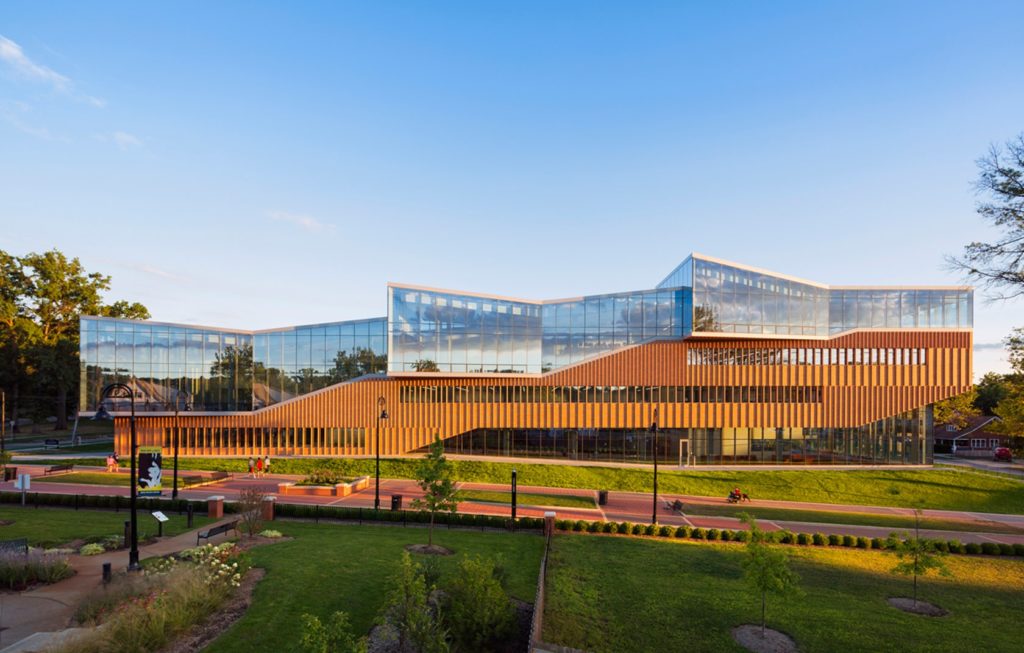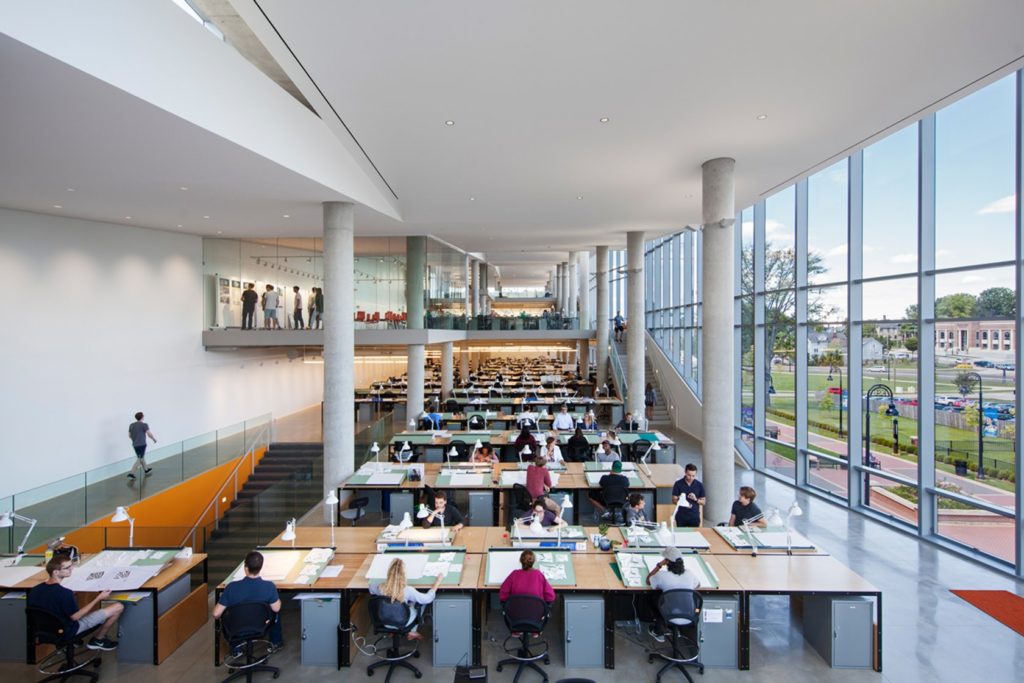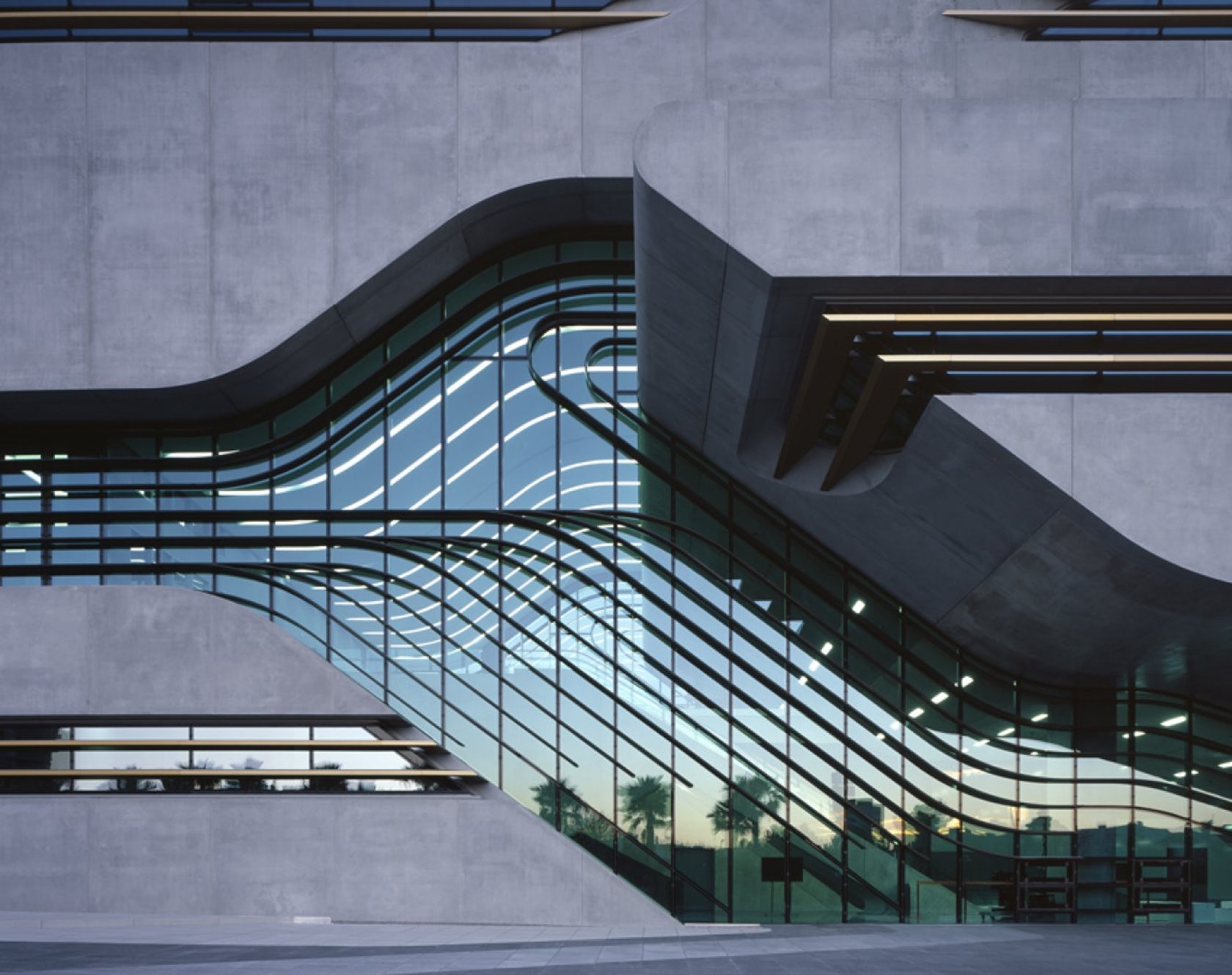Architects: Showcase your next project through Architizer and sign up for our inspirational newsletter.
Façades shape a building’s identity. Whether wrapped in ceramic, stone or steel, a carefully articulated façade transforms how we experience space and form. Glass façades embrace light and view, allowing warmth into the building while opening a project to its surrounding context. Increasingly common throughout the world, glass curtain walls are usually non-structural outer walls that do not carry any dead load from the building, other than their own weight. Commonly built to span multiple floors, curtain walls typically include extruded aluminum framing and other materials to addresses lateral loads and sway.
Layering space, curtain walls balance conditions along the envelope to control thermal expansion, movement, cooling, lighting and water diversion. When specifying such elements, it’s important to consider the support of curtain walls and how they transfer loads to floor structure or framing, as well as factoring in acoustic properties, maintenance, thermal and moisture performance. Taking a sampling of innovative curtain wall systems, the following projects illustrate different framing and installation types. Collectively, they begin to show how curtain walls can be specified and realized through collaboration between architects and manufacturers.


Kent State Center for Architecture and Environmental Design by WEISS / MANFREDI, Kent, OH, United States
Curtain walls created with Heintges & Associates
Created with a continuous gallery that anchors the building’s main public level, the new Kent State Center opens up to its surroundings while elevating space for design. Continuous sightlines combine with large curtain walls that encourage interdisciplinary discourse and enhance a sense of peripheral vision for students and faculty.
The 117,000-square-foot building opens up to the outside through an expansive 650-seat design studio. Encouraging dialogue between students and across disciplines, critique rooms ascend the south side of the studios where the large glazed areas feature custom, asymmetrically bull-nosed bricks that establish a rhythm along the building. Where these fins pass over window openings, a custom aluminum extrusion was specified. This allowed the façade to work in tandem with punched ribbon window openings.
Vol Walker Hall and the Steven L. Anderson Design Center by Marlon Blackwell Architect, Fayetteville, Ark. Photos by Timothy Hursley.
Curtain Walls by ACE Glass Construction and Viracon
Removing 13,000 square feet of library space in Vol Walker Hall, the new addition of the Steven L. Anderson Design Center features studio and critique spaces as well as an auditorium and roof terrace. Careful material detailing honors the building’s historic counterpart while establishing a powerful language of its own. A large fritted-glass brise-soleil was used to screen western sunlight and illustrate construction methods.
The project features more than 17 different glass make-ups in a wide array of system types, including: 6,000 square feet of the Kawneer 1600 System 2 veneer structurally glazed curtain wall with 140 vertical glass fins made with Viracon V175 silkscreened glass. This combines with Schott Okalux light diffusing glass and interior glazing consisting of 1/2-inch clear tempered four-sided structural glazed directly to steel framing.
Davis-Harrington Welcome Center by Dake Wells Architecture, Springfield, Mo., United States
Façade and Glazing by EFCO
Serving as Missouri State University’s front door, this new welcome center builds on the institution’s history and brand image. The project includes a 20-foot maroon and white bear graphic suspended from the building’s structure. The building enclosure combines a variety of materials in response to the surrounding campus context.
The rear ground-floor spaces are wrapped behind limestone cladding; to the north, the envelope has greater transparency, culminating in a tapering glass curtain wall that accentuates the building’s main entrance. White Swisspearl panels sheathe the fully glazed upper sections of the east and west façades with a system manufactured by EFCO.
Images via Mecanoo
Kaap Skil, Maritime and Beachcombers Museum by Mecanoo, Oudeschild, Texel, Netherlands
CF-50 Curtain Walls by Reynaers Aluminium
Building upon the Dutch tradition of reusing washed-up objects, Mecanoo designed this museum with a textured façade and peaked roof that echoes the character of the surrounding village. The reclaimed vertical slat façade plays with rhythm and shadows while heightening the contrast between floors through glazed curtain walls.
The inner envelope layer includes two solid walls of reinforced concrete capped with two glass walls framing views of the surrounding context. Steel frame construction allows minimal interference between structure and circulation, holding the glass in place and balancing both the glazing and the wooden strip cladding. This permits filtered light into the building through the CF-50 curtain walls.
JTI Headquarters by Skidmore, Owings & Merrill LLP ( SOM ), Geneva, Switzerland
Curtain walls made with Josef Gartner GmbH
SOM’s design for the JTI Headquarters draws on references from the site’s context, including Lake Geneva and the Alps. The project’s Closed Cavity Façade system was developed as a unique unitized curtain wall responding to the requirements of European Energy Directives and the Swiss Minergie sustainability rating.
The CCF system consists of triple glazing on the inner layer and single glazing on the outer, forming a cavity that’s combined with a roller blind. For more details on the CCF system, check out SOM’s detailed explanation on Architizer.
Pierres Vives by Zaha Hadid Architects, Montpellier, France
CF-50 Curtain Walls by Reynaers Aluminium
The Pierres Vives building combines an archive, library and sports sector together for the department de l’Herault. Formed around a single continuous envelope, the building creates a fluid identity that’s reflected in glass and opaque surfaces.
Over one thousand large precast concrete modules were used to echo the flow of the column-beam structure. Extending between these is a system of curtain walls fitted with Reynaers CW 70 aluminium profiles. This solution was based on the existing CW 50 system. The reconfigured systems called for numerous detailed studies to see how the enveloped façade would work with the assembly of the different, intricately cut concrete shells.
Architects: Showcase your next project through Architizer and sign up for our inspirational newsletter.
